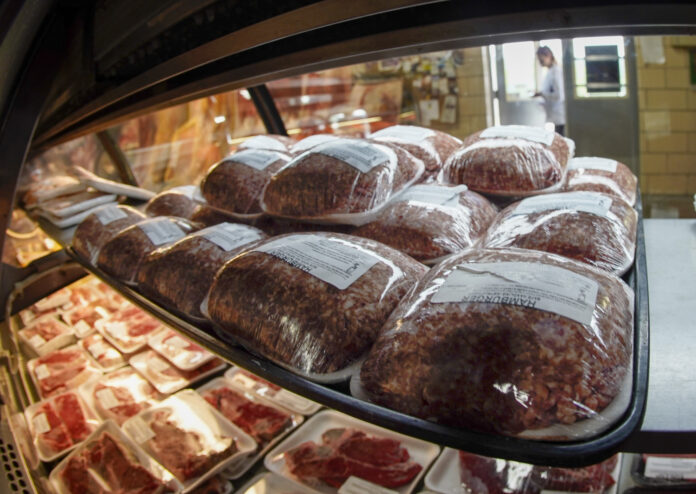
WASHINGTON (AP) — Wholesale prices in the United States rose 7.4% in November from a year earlier, a fifth straight slowdown and a hopeful sign that inflation pressures across the economy are continuing to cool.
Join our WhatsApp groupSubscribe to our Daily Roundup Email
The latest year-over-year figure was down from 8% in October and from a recent peak of 11.7% in March. On a monthly basis, the government said Friday that its producer price index, which measures costs before they reach consumers, rose 0.3% from October to November for the third straight month.
Rising prices are still straining Americans’ finances, particularly for food, rent and services such as haircuts, medical care and restaurant meals. Yet several emerging trends have combined to slow inflation from the four-decade peak it reached during the summer. Gas prices have tumbled after topping out at $5 a gallon in June. Nationally, they averaged $3.33 a gallon Thursday, according to AAA, just below their average a year ago.
And the supply chain snarls that caused chronic transportation delays and shortages of many goods, from patio furniture to curtains, are unraveling. U.S. ports have cleared the backlog of ships that earlier this year took weeks to unload. And the cost of shipping a cargo container from Asia has fallen sharply back to pre-pandemic levels.
As a result, the prices of long-lasting goods, from used cars and furniture to appliances and certain electronics, are easing.
Friday’s producer price data captures inflation at an early stage of production and can often signal where consumer prices are headed. Next week, the government will report its highest-profile inflation figure, the consumer price index. The most recent CPI report, for October, showed a moderation in inflation, with prices up 7.7% from a year earlier. Though still high, that was lowest year-over-year figure since January.
Federal Reserve Chair Jerome Powell, in a speech last week, pointed to the decline in goods prices as an encouraging sign. Powell suggested that housing costs, including rent, which have been a major driver of inflation, should also start to slow next year.
The Fed chair also signaled that the central bank will likely raise its benchmark interest rate by a smaller increment when it meets next week. Investors foresee a half-point Fed hike, after four straight three-quarter-point increases.
Yet Powell noted that services prices, which reflect the largest sector of the U.S. economy, are still increasing at a historically fast pace. Rapidly rising wages are a key driver of services inflation, he noted. That’s because as wages rise, many businesses pass on their higher labor costs to their customers through higher prices, which drives up inflation.
Pay is still rising quickly and could continue to fuel higher inflation through most of next year. In last week’s jobs report for November, the government reported that average hourly pay jumped 5.1% from a year earlier, far above the pre-pandemic pace. Powell said wage gains closer to 3.5% would be needed to bring inflation down toward the Fed’s 2% annual target.

fakenews from the senile guy in the white house and his obedient Soros controlled media.
Inflation “slowing down”?
That’s like gaining 50 pounds, then losing 4 and going around bragging that you lost weight.
what does “slowing down” help me?My salary never caight up yet with these higher prices. At least on the 80’s salaries rose with it. We are in a white collar worker recession and need help. I am not eligible for WIC and I need to pay $4.49 for a dozen eggs when it used to be .99 cents under Trump.
What can biden do you ask?
Firstly how about anyone earning under 250k (not 150 since thats bubkes after taxes& health costs) and who didn’t receive a minimum 25% increase in salary over the past year gets WIC (if they have kids). on the other hand if you earn only 50K , got a 25% increase in pay and also get food stamps you don’t wic too.
Next, when there is a bird flu we will approach this risk more startegically. Kill off fewer chickens and do what have to to mitgagate its spread via not killing them all off. Prepare in advance a plan to where we don’t have to kill so mnay brids
These are just two very small ideas to help the hard working white collar employees suffering a recession and lay offs now